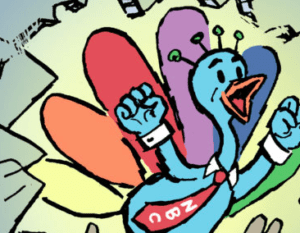Ad agencies are understaffed and their clients – small businesses in particular – often don’t have the time or the technical background to sift through reams of campaign data.
And so, increasingly, they’re turning to automation to cut down on the more tedious and time-consuming aspects of account management.
Tag, an independent agency based in Iowa, uses a suite of automated reporting tools, including from Basis Technologies, to communicate cross-platform campaign metrics to its clients.
Data visualization and automated campaign reporting come in handy when account managers need to convey complicated information to SMB clients in a digestible way, said Audra Foley, Tag’s VP of media.
Although Tag does manage some million-dollar accounts, it also serves clients whose annual advertising budgets top out at around $10,000. And those smaller accounts can be overwhelmed by the amount of information found in reporting platforms such as Google Data Studio, Foley said.
In early June, Basis, which Tag already uses for media activation, launched an offering called Data Canvas. The tool automatically generates customized campaign reports that highlight whichever KPIs matter to individual clients and makes it easier to measure performance against benchmarks set by similar campaigns.
Streamlining the reporting process allows Tag’s team of 10 account managers and two ad ops supervisors to devote more time to customer relations and campaign optimization rather than grunt work, Foley said.
Campaign visualization
In the past, Tag’s account managers had to manually pull reports from each platform, “and we all know all the platforms report differently,” Foley said.
The Data Canvas visualization tool compiles a campaign’s performance metrics across programmatic, search and social media into one report.
Basis collects a revenue share from each programmatic campaign that runs on its platform, but it doesn’t take a cut from direct deals or from search and social media spend, the company told AdExchanger. As of now, Data Canvas is a value add for clients that use the media activation platform, but that may change in the future, Basis said.
Tag’s ad ops team can use the time it saves on creating and editing reports to focus on higher-order tasks like hands-on optimization for individual accounts, Foley said.
The agency’s account managers are now able to meet with some of its advertiser clients as often as twice a week to evaluate campaign performance, tweak creative and adjust targeting parameters. For example, Tag runs recruitment campaigns for a manufacturing company, and that client uses Data Canvas’s multiplatform reporting to evaluate performance and tailor creative to different geographic locations, Foley said.
Tag runs A/B tests through Basis and uses the platform’s benchmarking feature to measure campaigns against industrywide trends.
The Basis platform also has a feature that automates contextual category recommendations based on a campaign’s highest-performing audiences. This feature relies on Peer39’s contextual analysis tech.
Tag has been using the contextual targeting feature for several months, Foley said. Based on the success Tag has had with contextual targeting, “I’m not worried about the cookieless world at all,” Foley said.
Education
Automated tools also make it easier to communicate with clients who aren’t as digital media savvy and educate them on which results are worth chasing.
For example, one of Tag’s smaller clients is running a campaign seeking sign-ups for football summer camps. The reporting tools clearly demonstrate which types of ads are yielding higher click-through rates and driving application flow, Foley said.
Although there is some fear that automation will replace entry-level jobs, Foley said, Tag is using it to more effectively onboard new talent.
The automated reporting process makes it easier to train newer account managers on the finer points of running multichannel campaigns. Rather than teaching new hires how to populate Excel spreadsheets and pivot tables, Foley said, she can get straight into the nitty gritty of campaign optimization.














